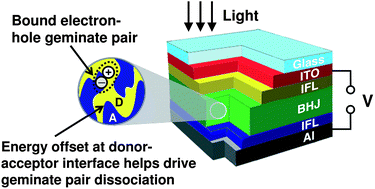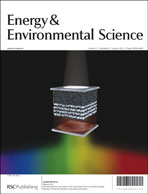Modeling geminate pair dissociation in organic solar cells: high power conversion efficiencies achieved with moderate optical bandgaps†
Abstract
We propose a model for geminate electron–hole dissociation in organic photovoltaic (OPV) cells and show how power conversion efficiencies greater than those currently achieved might be realized via design strategies employing moderate optical bandgaps and enhanced charge delocalization near the donor–acceptor interface. Applying this model to describing geminate electron–hole dissociation via charge transfer (CT) states, we find good agreement with recently published high-efficiency


 Please wait while we load your content...
Please wait while we load your content...